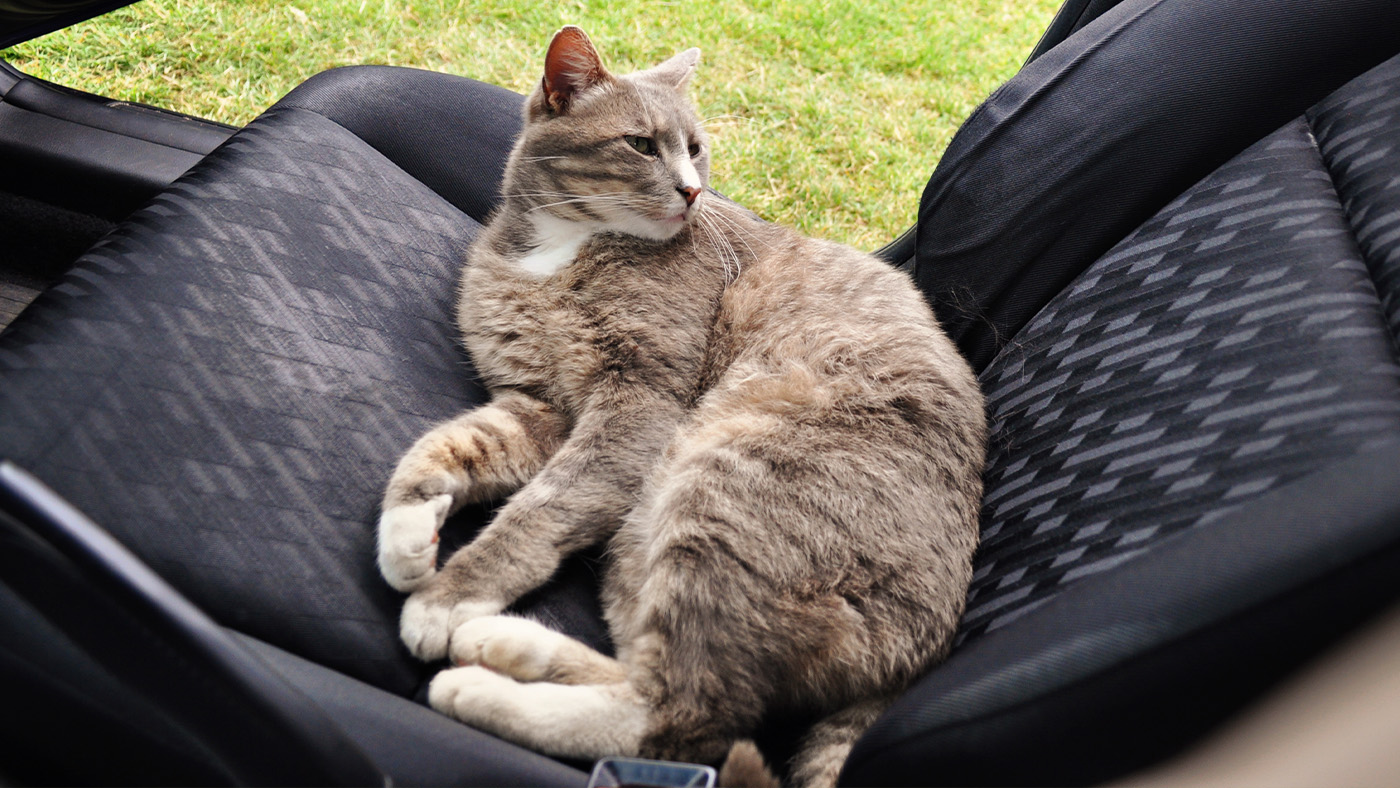5 types of dog brushes and how to use them
We give you the rundown on the most popular types of dog brushes so you can find the perfect fit for your furkid
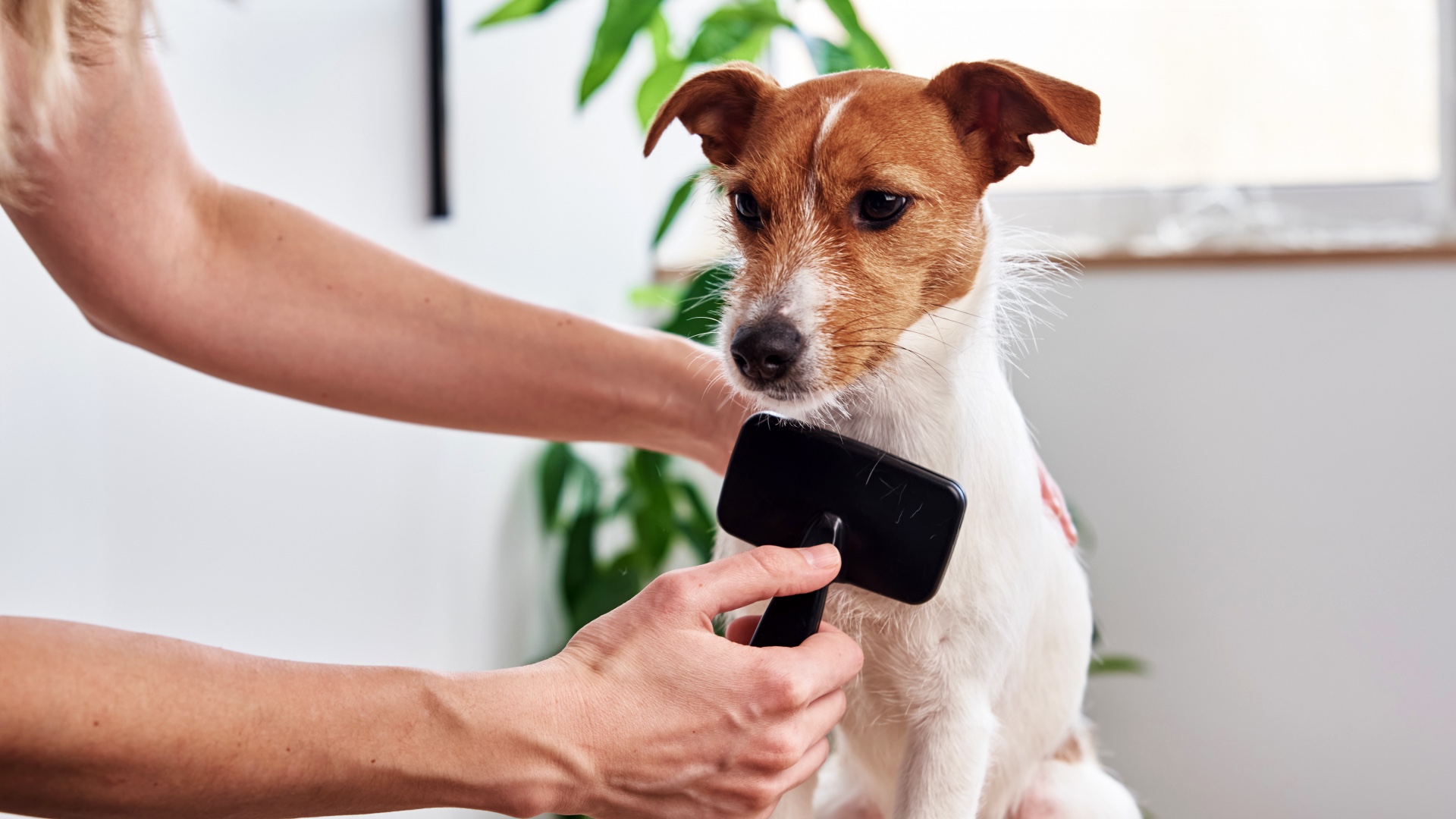
Confused about the different types of dog brushes, which one to use and how to use it? Fear not pet parent because you’ve come to the right place! Brushing your dog is one of the most important parts of the grooming process and the right tool can help make it a more enjoyable experience for you and your furkid.
While the best dog brushes include a wide variety of options, not every brush is going to be right for your pooch. Factors such as your canine companion’s coat length and type will mean that some brushes are better suited to the job than others.
So, why is it so vital that you choose the right brush? Good question! While regular brushing may not seem like the most glamorous part or being a pet parent, it’s essential for helping to remove dead hair, getting rid of mats and tangles, and ensuring your pup’s coat stays shiny by assisting in the distribution of the skin's natural oils. The right brush will help you achieve all of those things.
Below, you’ll find the five most common types of dog brushes that are worthy contenders for a place in your dog grooming kit as well as a breakdown of which dog coat types they’re suitable for and how to use them. Ready to get brushing? Let’s do this!
1. Slicker brush
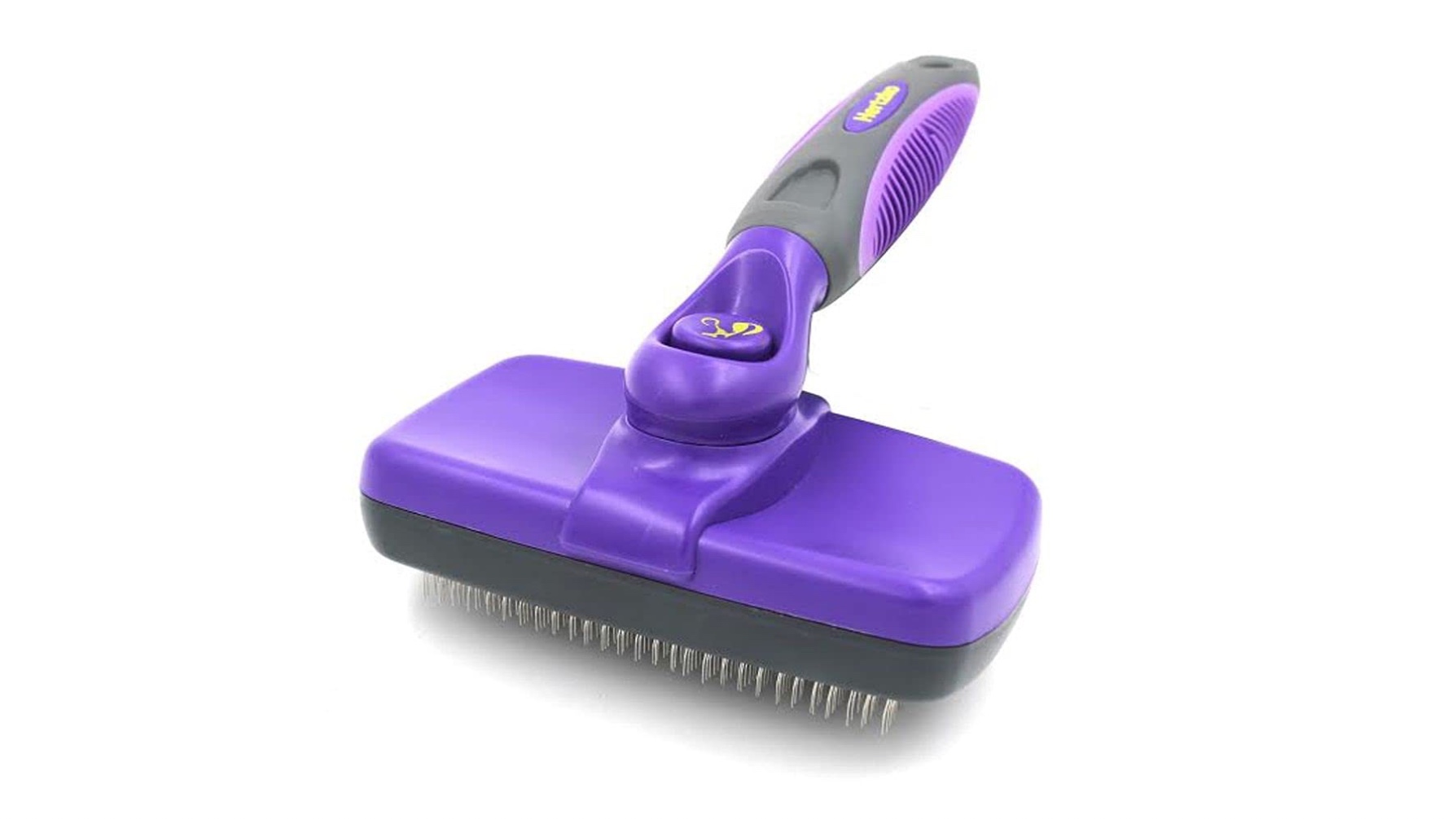
Slicker brushes are a firm favorite amongst pet parents and it’s not hard to see why. These brushes have a flat surface that contain lots of fine close wires packed tightly together and they’re fantastic for removing knots, tangles, and even mats.
They also do a brilliant job of ridding your dog’s coat of debris, so they’re an excellent choice if you have a pup who loves rolling around in the dirt! And because the bristles on a slicker brush are angled, you’re able to brush your dog without scratching their skin.
A slicker brush can also be beneficial for you as a pet parent. While not all slicker brushes are self-cleaning, many newer models are, which means a simple click of a button will release all the collected hair straight into your kitchen trash can. Some also have ergonomically designed handles, meaning they have a comfortable feel in the hand and make those longer grooming sessions easier for you.
Suitable for: Slicker brushes are a useful tool to have in your grooming arsenal no matter what breed of dog you have, but they’re particularly good for longer-haired, curly or wiry haired dog breeds who are more likely to develop knots and tangles.
How to use: Some dogs will only need to be brushed with a slicker brush while others will require the use of more than one kind of brush. Regardless of which category your dog falls into, always start with the slicker brush first.
Lightly mist your dog’s coat with water or a conditioning or detangling spray as this will make brushing easier, but be careful not to get the fur too wet as this can cause any mats or tangles to tighten up.
Begin brushing your pup’s hair from the surface to the end of the hair, lifting the hair as you brush and being careful not to scratch the skin with the bristles. Remove any mats and tangles, loosening first with your fingers if they’re quite tight.
Once all mats and tangles have been removed, continue to brush the legs, body and neck to remove dead hair, skin and debris, being careful to avoid the face.
2. Rake brush
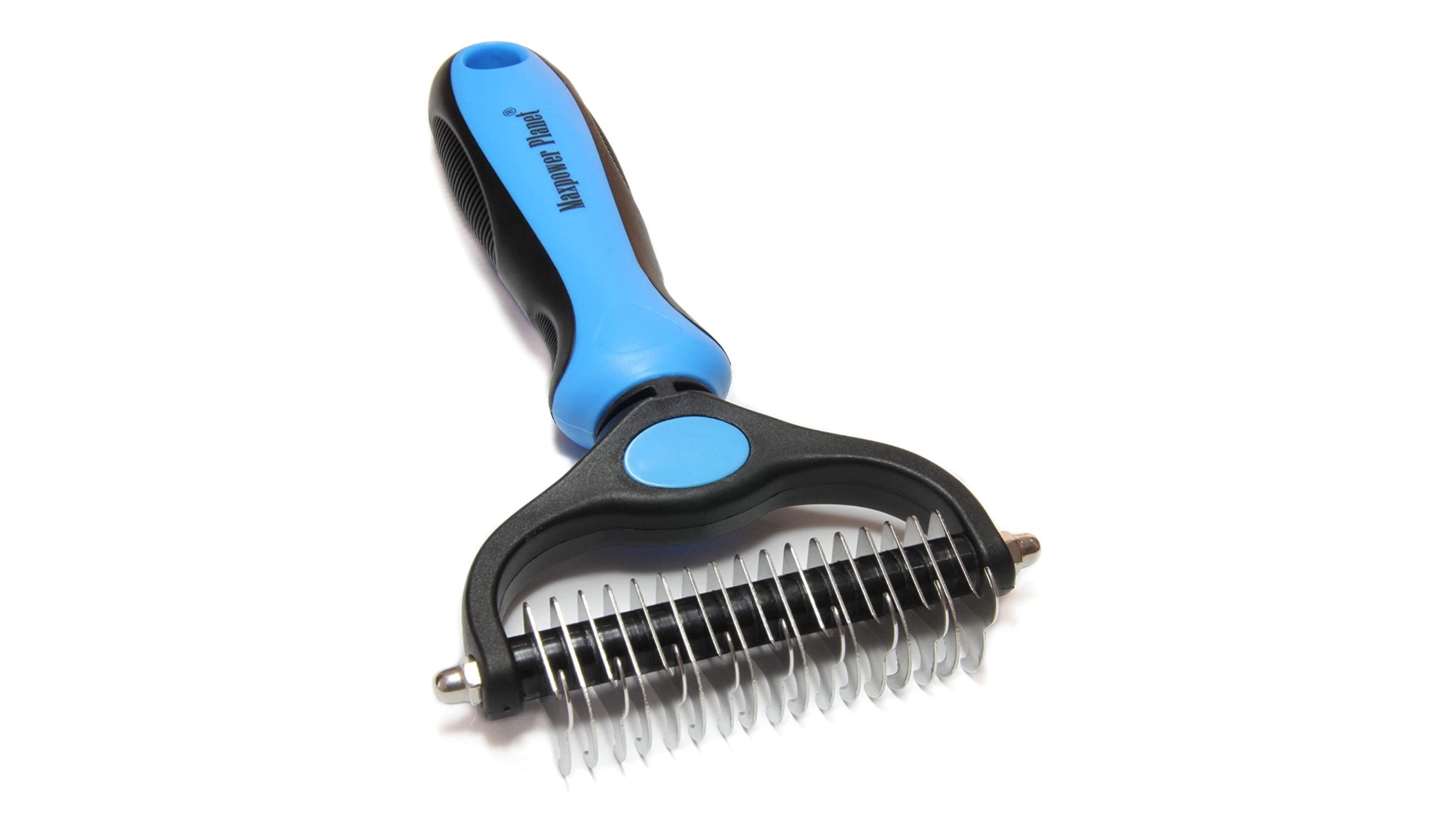
Designed to penetrate deep down into thick and double coats, rakes feature one or two rows of long metal pins that do a brilliant job of removing knots, tangles, and dead hair.
If you have a dog who tends to shed their undercoat in clumps, a rake can be beneficial because it can get down far deeper than most standard brushes and make it easier for you to remove all that loose fur.
Because the pins of a rake brush get very close to your dog’s skin, it’s important you don’t press down too hard when you’re using it as this can be painful. When selecting a rake, look for one that has metal pins that are about as long as your dog’s fur to ensure they can reach the undercoat.
Suitable for: Medium to long-haired breeds with thick double coats.
How to use: There are several different types of rake brushes on the market and we recommend you begin your grooming session by using a de-matting rake. These feature blades that will activate when they sense resistance, cutting the mat loose.
Once you’ve got rid of all the mats, you can swap to an undercoat rake, making sure to brush your dog’s fur in the same direction as it grows, from head to tail. Use short strokes, beginning at the top of your dog and working your way to the back.
After all the loose fur has been removed, you can swap over to a bristle brush to remove any last bits of hair and debris while smoothing the coat and stimulating the oils to give the fur a nice shine.
3. Bristle brush
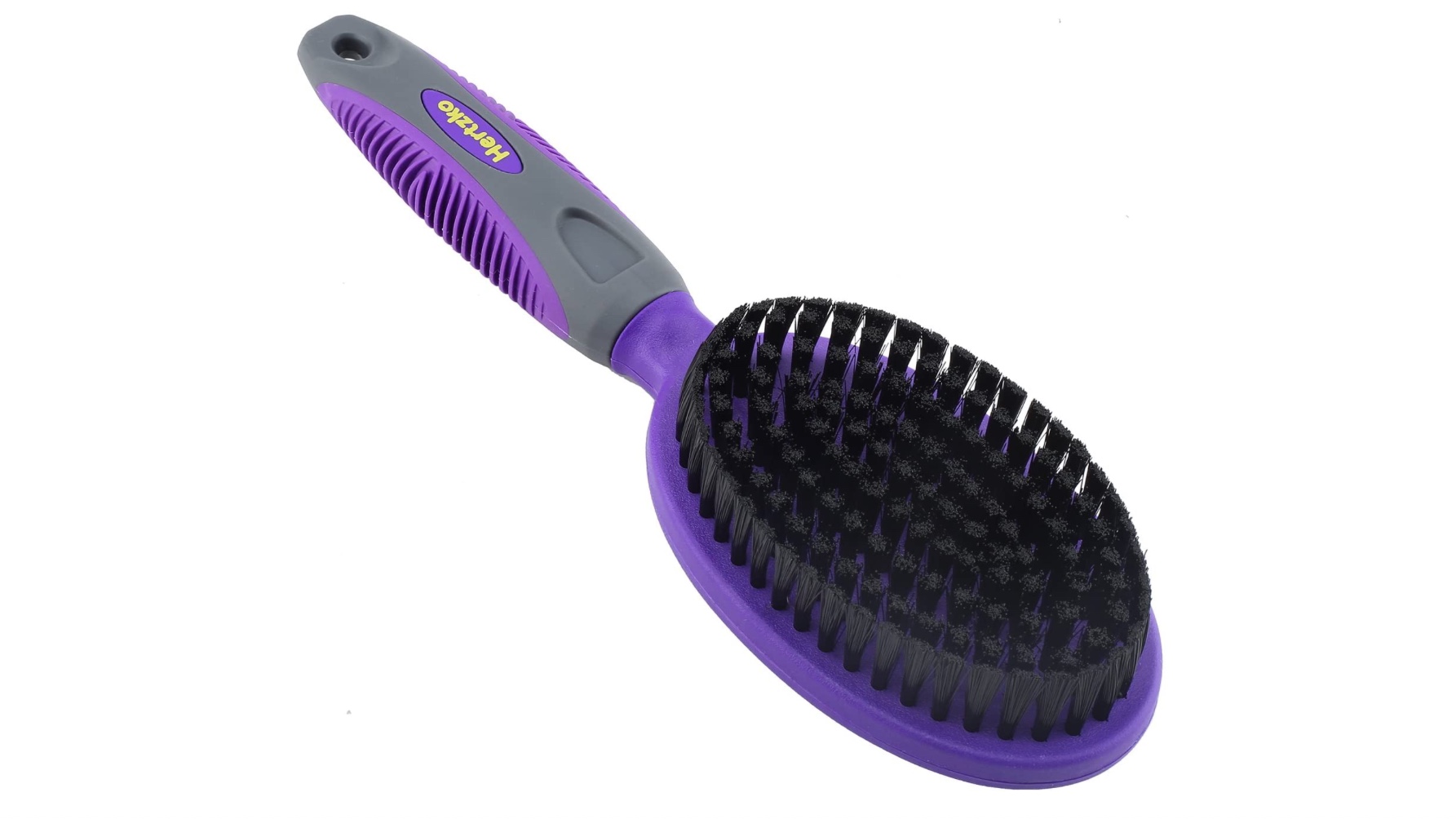
There are very few dogs out there who don’t enjoy the feel of this kind of brush with its soft clustered bristles that offer a gentle brushing experience that works on the top layer of fur while also distributing the natural oils in the coat.
Because bristle brushes tend to be soft and gentle, they’re great for use on sensitive areas, like your dog’s face and stomach, and because they won’t hurt your pup, they’re a good brush to introduce your dog to grooming.
Suitable for: Breeds with short and thin coats or use as a finishing brush on all breeds.
How to use: Using a bristle brush every day is a great way to keep your canine companion’s coat looking its best. And because they’re gentle, they’re also easy to use.
If your dog has a short or thin coat, you can go straight in with a bristle brush, remembering to go over the coat in the direction of the fur growth. This will collect any loose hair, dander and debris and stimulate the natural oils at the same time.
If your dog has a thick or long coat, use a slicker or rake first and then a bristle brush last to add a lovely finish.
4. Pin brush
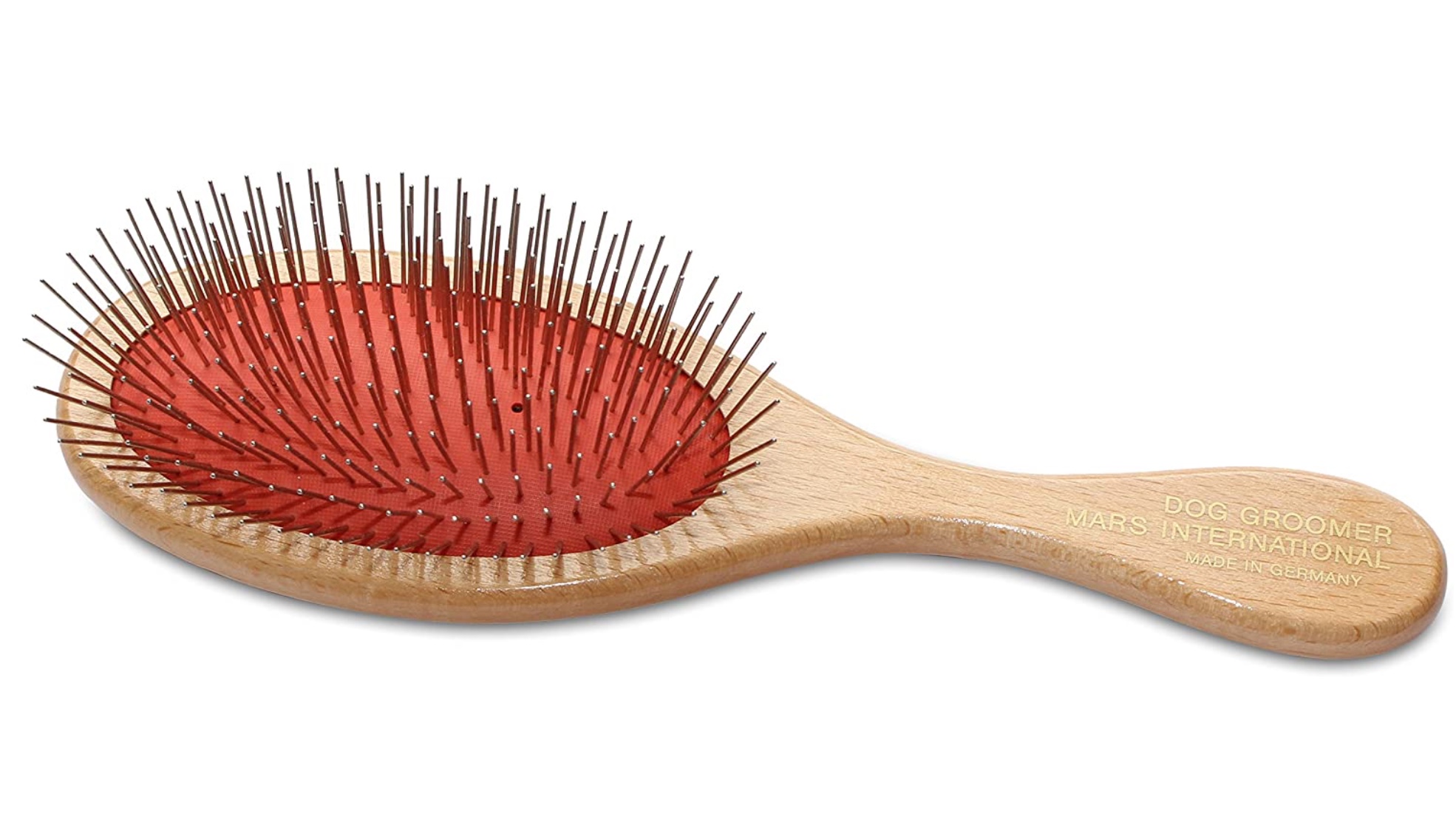
While pin brushes are sold on their own, you’ll also often find double-sided pin-bristle brushes on the market as these two styles work beautifully together. Pin brushes contain, yip, you guessed it - pins!
They’re very similar to human brushes in that they’re often oval shaped with a bunch of flexible wires that have pins on top. Pin brushes are good for getting through medium to long coats as well as curly hair, but they’re best used for picking up loose fur and as a finishing brush as they’re ineffective when it comes to dealing with knots and tangles.
Like bristle brushes, pin brushes are very gentle thanks to the wide gap between the wires, so you can brush without damaging the coat or creating a static charge - the latter of which is ideal if your pup has a frizzy coat that you don’t want poofing out!
Suitable for: Show dogs who need a glossy and shiny coat, medium and long coats, curly coats, silky coats and as a finishing brush for all breeds.
How to use: The way in which you use a pin brush will differ slightly depending on your dog’s coat type. If it’s long and flowing, brush along the hair grain and for thin hair, go against the grain. Pin brushes are safe for use on the ears and tail, so brushing there will help prevent tangles.
5. Rubber brush or glove
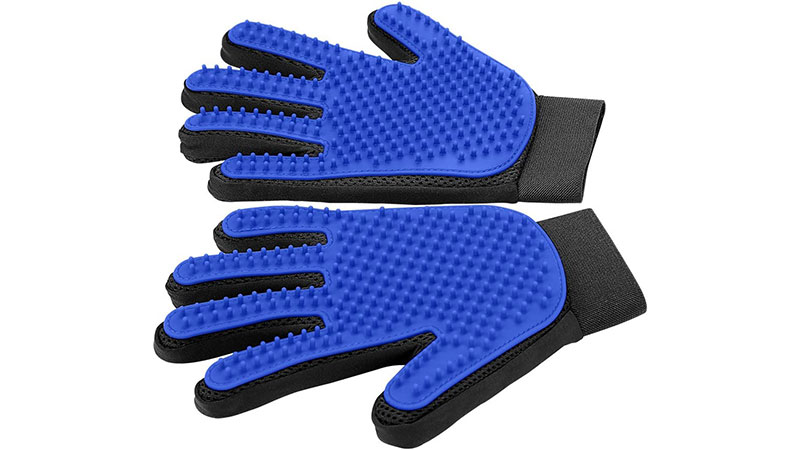
Available as a brush or a glove, rubber does a fantastic job of distributing the natural oils in your dog’s coat, preventing drying and unnecessary shedding. And even better? It gives your dog a lovely massage at the same time!
Most dogs love the feel of rubber and the brush style can help remove dirt and dander in the coats of short and medium dogs. In a glove or grooming mitt style, loose hair will stick to the silicone tips making de-shedding a lot easier.
Suitable for: Rubber brushes are perfect for short or medium-haired breeds while a rubber glove will work on both long and short haired dogs as well as those with curly hair.
How to use: Grooming gloves are essentially designed to ‘pet’ the hair away, so really, that’s all you need to do! Simply use a mix of short and sweeping motions, depending on where you’re grooming, and the glove will take care of the rest. You can also spray a bit of water on the glove before you begin to make life easier.
PetsRadar Newsletter
Get the best advice, tips and top tech for your beloved Pets

Kathryn is a freelance writer who has been a member of the PetsRadar family since it launched in 2020. Highly experienced in her field, she's driven by a desire to provide pet parents with accurate, timely, and informative content that enables them to provide their fur friends with everything they need to thrive. Kathryn works closely with vets and trainers to ensure all articles offer the most up-to-date information across a range of pet-related fields, from insights into health and behavior issues to tips on products and training. When she’s not busy crafting the perfect sentence for her features, buying guides and news pieces, she can be found hanging out with her family (which includes one super sassy cat), drinking copious amounts of Jasmine tea and reading all the books.
